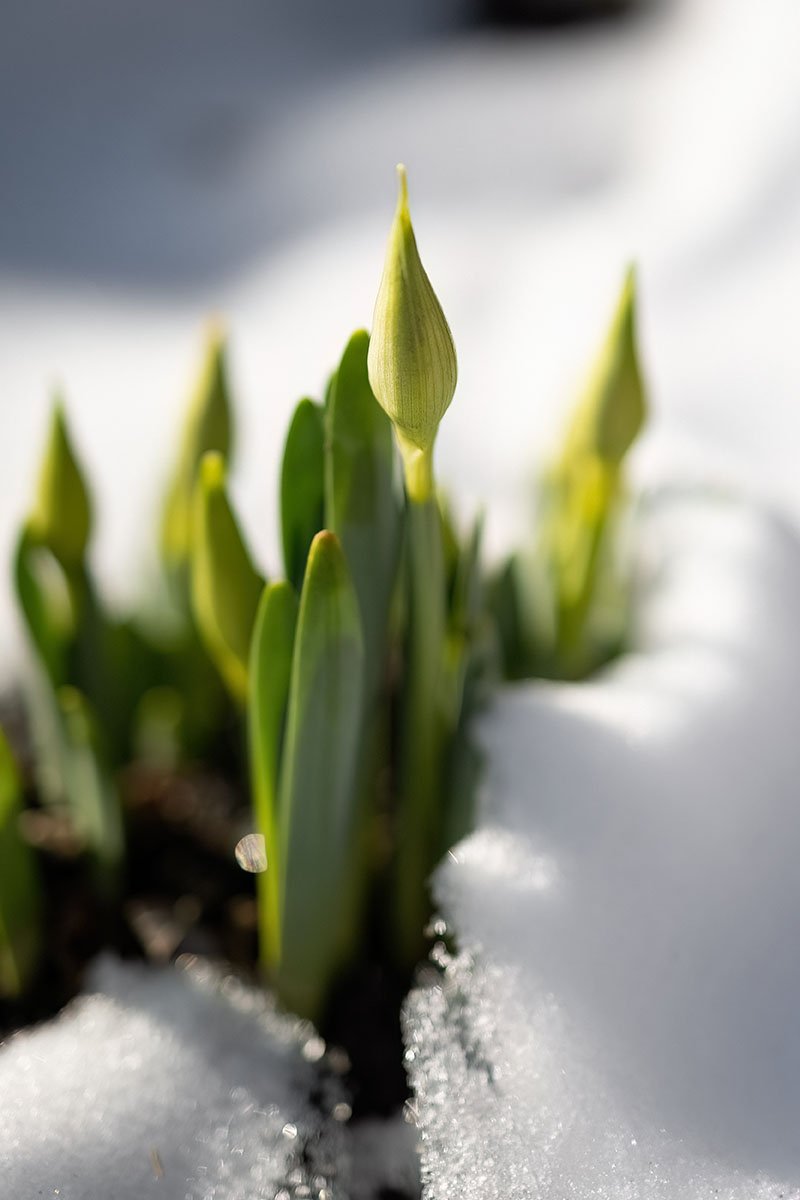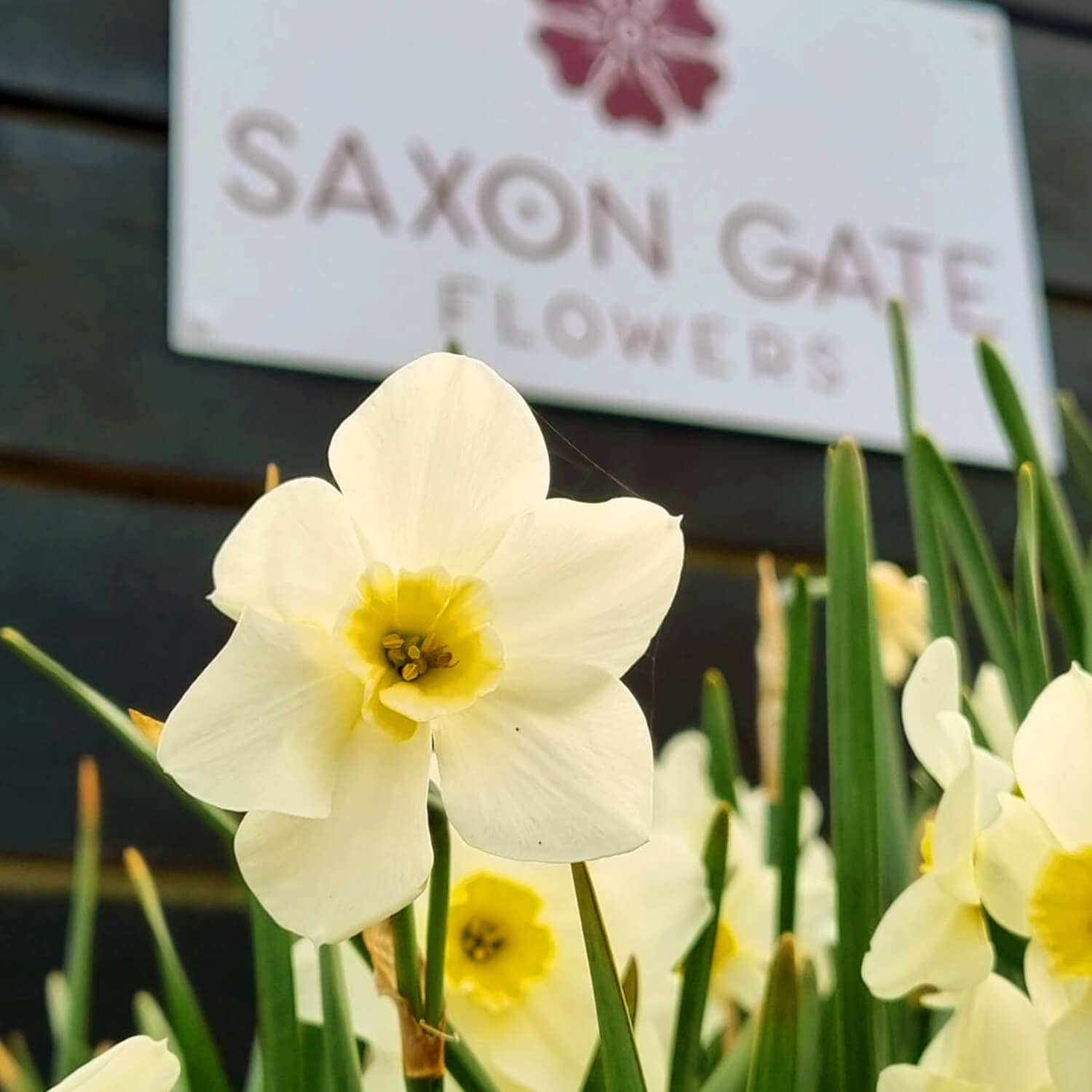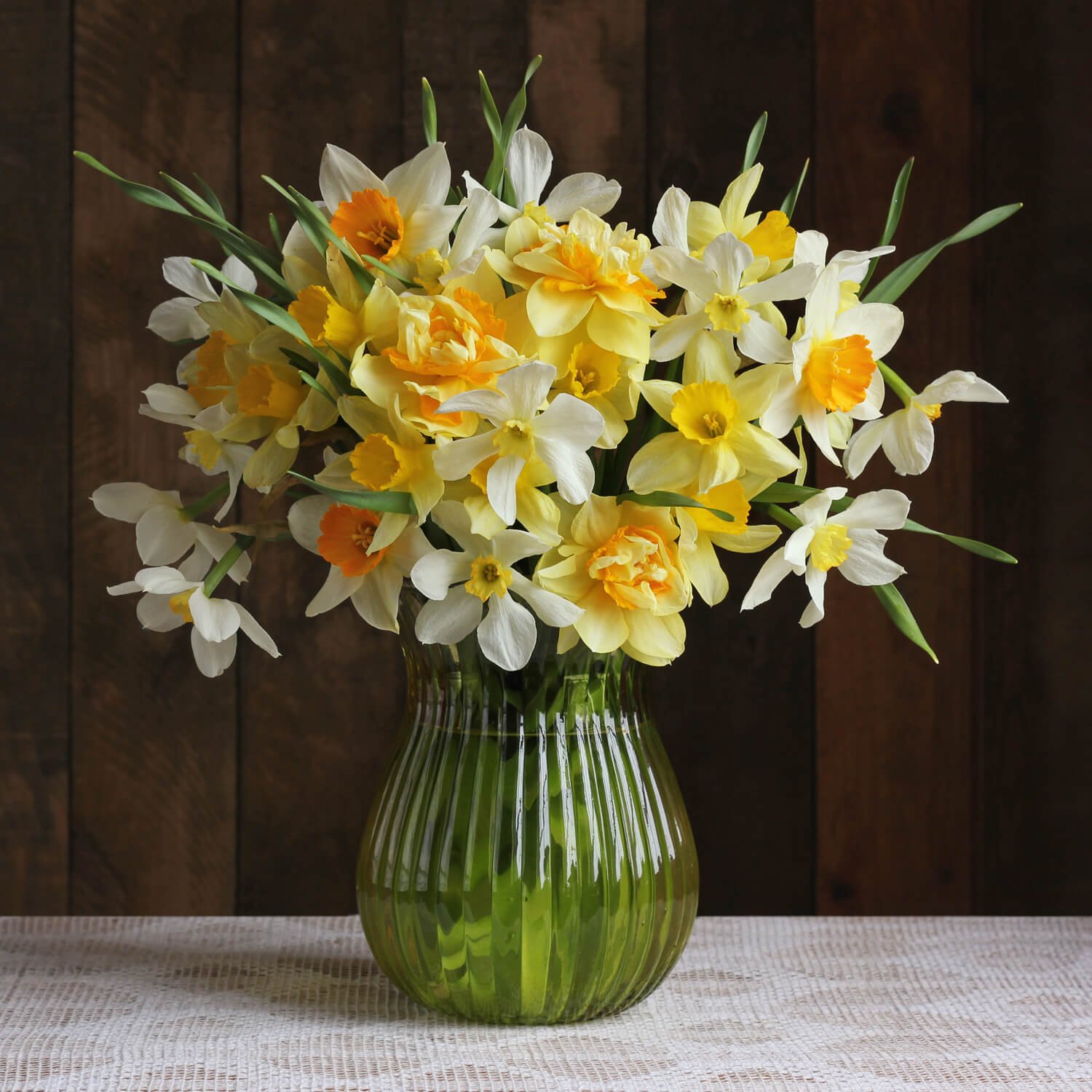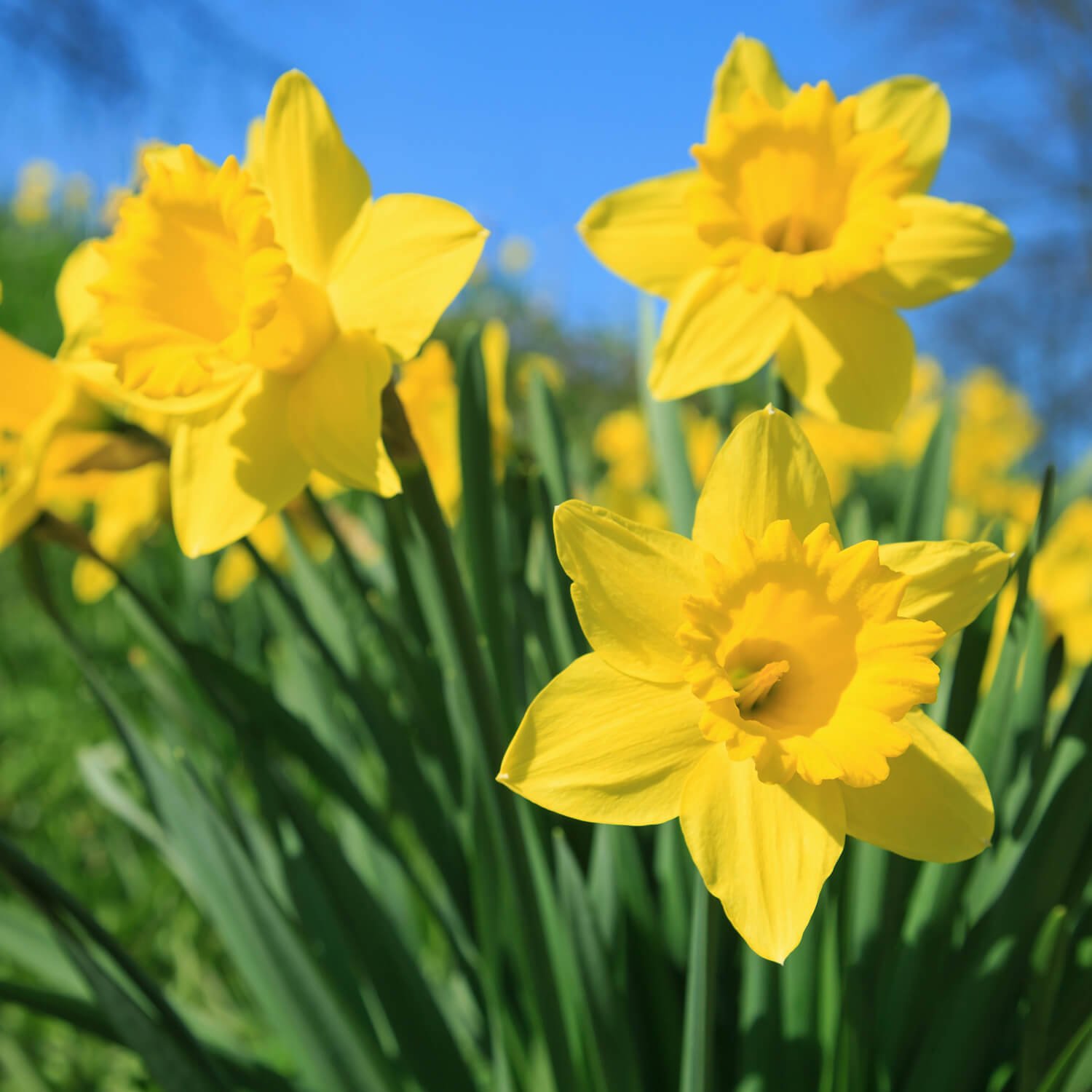Daffodils
The Daffodil: A vibrant herald of spring
The daffodil stands as a vibrant herald of spring, marking the end of winter's chill with its bright blooms. It's not just a flower; it's a symbol of hope and renewal, eagerly anticipated as the first colourful sign that warmer days are on the horizon. The sight of daffodils pushing through the last snows of winter is a heart-warming signal of the changing seasons.
Seasonal Availability of the Daffodil
Planted in September, they spend several months developing roots before the flowers burst forth, usually between February and May.
Varieties of Daffodils
Daffodils boast an impressive diversity, with over 13,000 types gracing gardens and fields. They range from the iconic yellow trumpet daffodils to delicate white and orange varieties, offering a variety for every preference. This vast array allows for a rich blend of textures and colours in both gardens and floral designs.
Complementary Flowers
Daffodils are versatile in arrangements, pairing well with other early spring flowers like tulips and hyacinths for a burst of spring colour.
How to look after Daffodils
It's key to remember that daffodils secrete a sap that can harm other flowers. To avoid this, let daffodils sit in water alone for a few hours before mixing them with other blooms.
Beautiful Spring flowers in a vase - Daffodils, Tulips and Hyacinths
Fascinating Daffodil Facts
The Romans first brought the daffodil to Britain.
They’re the official 10th wedding anniversary flower.
The daffodil is the national flower of Wales.
Across cultures, daffodils represent new beginnings and rebirth, ideal for celebrating new ventures or expressing sentiments of love.
The daffodil has inspired poets and authors, notably William Wordsworth with his famed poem "I Wandered Lonely as a Cloud."
In the UK, especially in Cornwall and the Isles of Scilly, daffodil cultivation is a significant industry, contributing to the local economy.
Daffodils are surprisingly tolerant of cold, and they’re an ideal flower for novice gardeners in most regions.
The daffodil's varied types, role as a spring herald, and its deep-seated symbolism ensure its beloved status in British culture. It's not just a flower; it's a yearly reminder of growth, renewal, and the enduring beauty of nature.
What is your favourite Spring flower?






